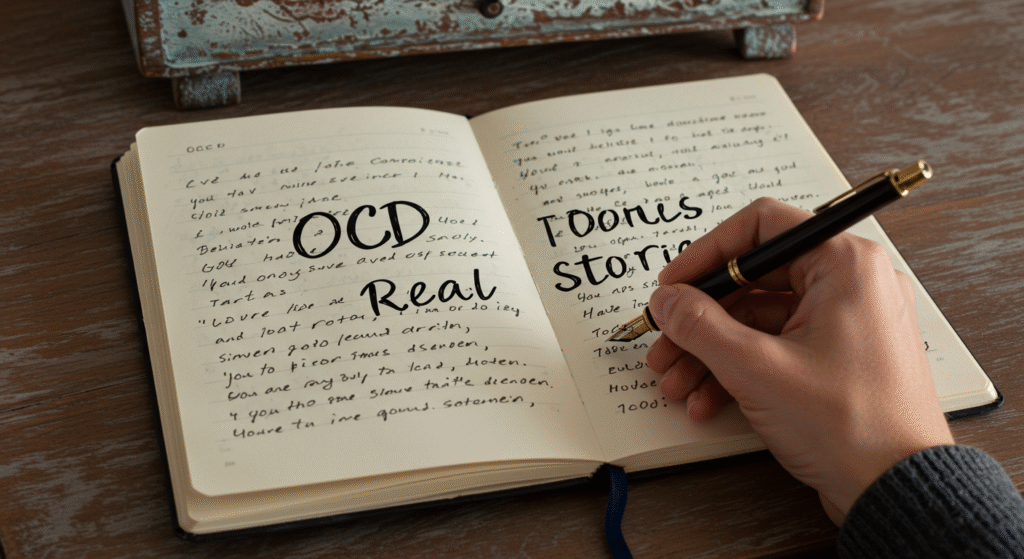Obsessive-Compulsive Disorder (OCD) affects millions of people — children, teens, and adults alike. While most people associate OCD with behaviors like hand-washing, checking, or counting, fewer understand what causes these behaviors to start in the first place. These causes are often called triggers.
So, what exactly is an OCD trigger?
An OCD trigger is any thought, situation, object, or feeling that causes a surge of anxiety, which in turn leads a person to perform a compulsion or ritual to relieve that discomfort. Triggers vary widely between individuals and can be subtle, surprising, or challenging to avoid.
Understanding these triggers is one of the first and most empowering steps in managing OCD. This article will help you recognize common triggers and offer natural, positive lifestyle tips to help people cope and create a more supportive environment.
Why Understanding Triggers Is Important
OCD can feel overwhelming — not just for the person experiencing it, but for their families, teachers, and friends. Triggers often seem random or irrational to others, but for someone with OCD, they are genuine and very powerful.
Being able to spot what might lead to anxiety or compulsive behavior can:
- Reduce confusion and frustration in daily life
- Help people feel more in control of their environment.
- Prevent unnecessary distress
- Create a more supportive and understanding home or school atmosphere.
This understanding is also critical for those who may not yet realize their symptoms are part of OCD, especially children or teens.

Common OCD Triggers (And How They Might Look in Real Life)
Every person with OCD has their own unique set of triggers. Still, some themes are prevalent. Below are some general types of OCD triggers — not to label, but to illustrate.
🔹 1. Contamination Fears
Trigger Examples: Dirt, germs, bodily fluids, shared spaces, touching door handles
Typical Response: Excessive hand-washing, avoiding particular objects or people
“I used to avoid hugging people because I was scared of passing on germs — even if no one was sick,” says one 14-year-old sharing their OCD story.
🔹 2. Perfectionism and Symmetry
Trigger Examples: Objects not being “just right,” uneven numbers, crooked lines
Typical Response: Reorganizing, rewriting, rechecking until it “feels right”
This type of OCD trigger is often misunderstood as being “neat” or “picky,” but it’s really about reducing a feeling of inner distress.
🔹 3. Fear of Harm or Responsibility
Trigger Examples: Fear of causing harm by accident, forgetting something important
Typical Response: Rechecking appliances, constantly seeking reassurance
Children with this trigger often ask, “Are you sure I didn’t hurt someone?” or “What if I forgot to turn off the lights and the house burns down?”
🔹 4. Taboo Thoughts
Trigger Examples: Intrusive thoughts that are violent, religious, or sexual
Typical Response: Mental rituals, avoiding specific situations, inner guilt
These triggers are rarely talked about, especially in kids, because they feel so private, but they are far more common than most people realize.
🔹 5. Numbers and Patterns
Trigger Examples: “Bad” numbers, needing to count to specific numbers
Typical Response: Counting rituals, tapping, or doing actions a particular number of times
This type of trigger often starts in childhood and can go unnoticed for years.
🔹 6. Change and Uncertainty
Trigger Examples: Sudden changes in routine, unanswered questions, the unknown
Typical Response: Resistance to transitions, repeating questions, excessive planning
Small changes — like a teacher being absent or dinner being served late — can become very stressful if they disrupt a child’s sense of order.
What OCD Triggers Are NOT
Understanding what doesn’t count as a trigger is just as important.
OCD triggers are not the same as being picky or anxious.
They are not about attention-seeking or overreacting.
And they are not a result of poor parenting or a lack of discipline.
They are part of how a person’s brain processes specific thoughts and feelings, often in a way that feels beyond their control.

How Parents and Loved Ones Can Support Without “Fixing”
When someone you care about is dealing with OCD triggers, the natural reaction is to try to help — to fix the situation or make the discomfort go away. But often, the most powerful thing you can do is to support rather than solve.
🌼 Positive, Supportive Ways to Help:
1. Listen Without Judgment
Sometimes the person with OCD needs to be heard. Responding with “That sounds tough” or “I understand why that would feel scary” can go a long way.
2. Avoid Offering Constant Reassurance
It might feel kind to say, “Yes, you’re fine,” over and over — but this can unintentionally feed the OCD cycle. Instead, help them reflect with questions like, “What do you think will happen if you don’t do it?”
3. Validate the Feeling, Not the Fear
Say things like: “I get that this feels upsetting,” instead of “That’s silly, don’t worry.”
4. Model Calm Behavior
Children, in particular, look to adults to gauge how to react. Remaining calm — even when rituals or worries seem irrational — helps set a grounded tone.
5. Give Gentle Reminders of Strength
Celebrate small steps. Comments like “You did great handling that situation today” or “I saw you pause before reacting — that’s amazing” build confidence.
Managing OCD Triggers in Everyday Life
While you can’t control all triggers, there are everyday habits and environmental shifts that can help ease the intensity of OCD in a natural, supportive way.
☀️ Simple Tips for Families and Individuals
🔸 Create a Calm Environment
Soft lighting, fewer distractions, and tidy spaces can lower background stress. A peaceful physical space often supports a calm mind.
🔸 Stick to Gentle Routines
Predictability offers comfort. Routines don’t have to be rigid, but knowing “what comes next” can reduce anxiety about the unknown.
🔸 Make Space for Expression
Allow space for creativity — journaling, drawing, music, or talking. Many people process their thoughts better through art or imagination than through direct conversation.
🔸 Encourage Outdoor Time
Fresh air and natural movement are powerful tools for emotional regulation. Nature helps ground the mind through a park walk or backyard play.
🔸 Limit Overstimulation
Too much screen time, noise, or information can heighten anxiety. Balance digital activities with screen-free moments to reset.
Real Stories: Managing Triggers with Understanding
Lina, age 11, would get extremely anxious whenever her desk wasn’t perfectly aligned. Her parents began helping her identify “how big the worry feels today” on a scale of 1 to 10 — a simple strategy that gave her language for her emotions, without shaming the behavior.
David, age 9, struggled with obsessive fears of saying the “wrong thing” and would apologize constantly. His teacher started using a “reset” word — when David felt overwhelmed, he’d say “clear screen,” like a computer. It made things lighter and gave him a break without reinforcing the fear.
Final Thoughts: Kindness and Patience Matter
Living with OCD — or parenting someone who does — is a journey that involves patience, understanding, and compassion. Triggers are not weaknesses. They’re just signs that the brain is trying to protect itself, even if in a way that doesn’t make logical sense.
When we respond to OCD triggers with kindness, awareness, and calm, we create a world where people with OCD feel empowered, not ashamed.
OCD does not define a person. Learning how to live well, even in the presence of challenges, is not only possible but also powerful.


Leave a Reply